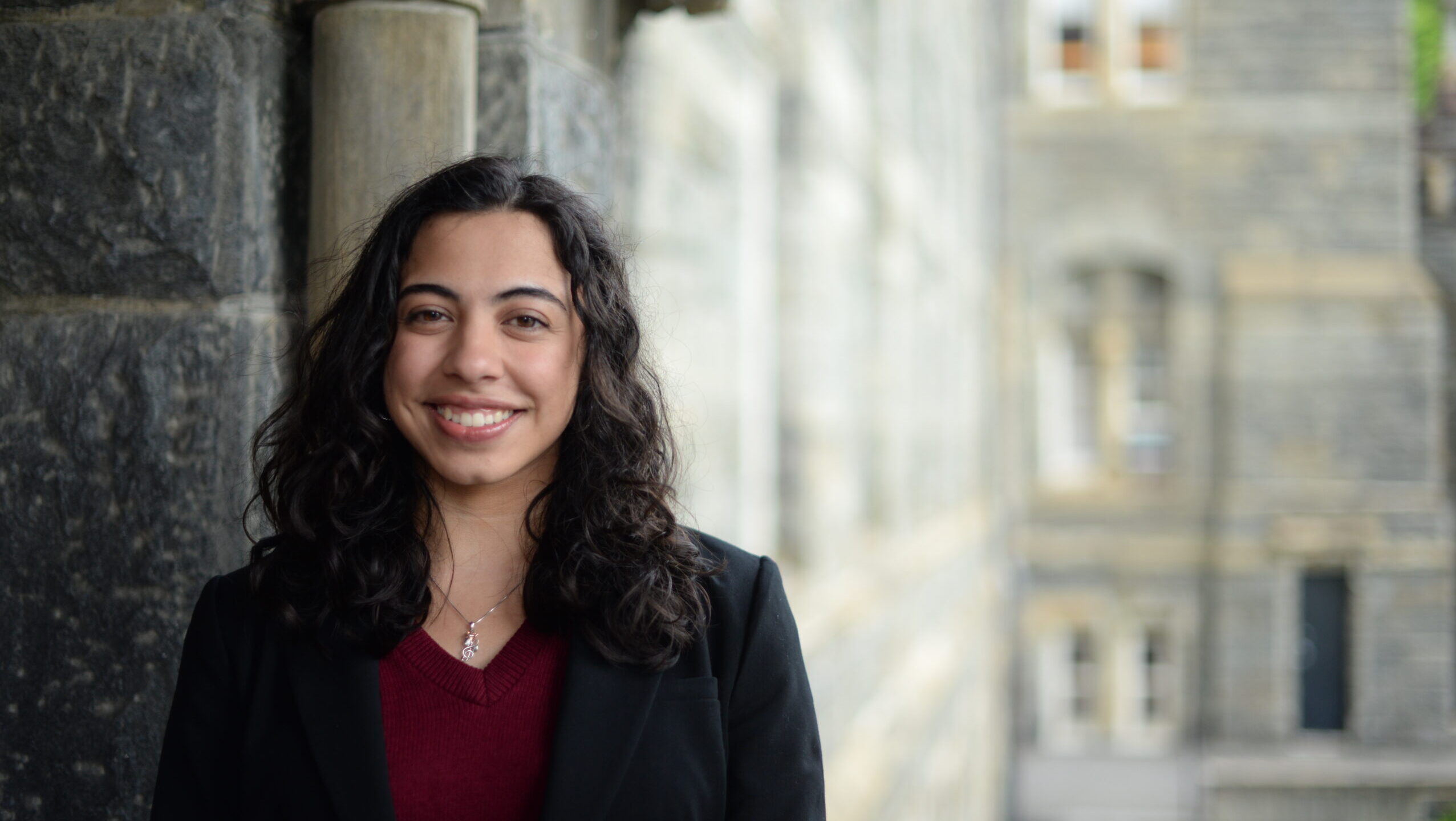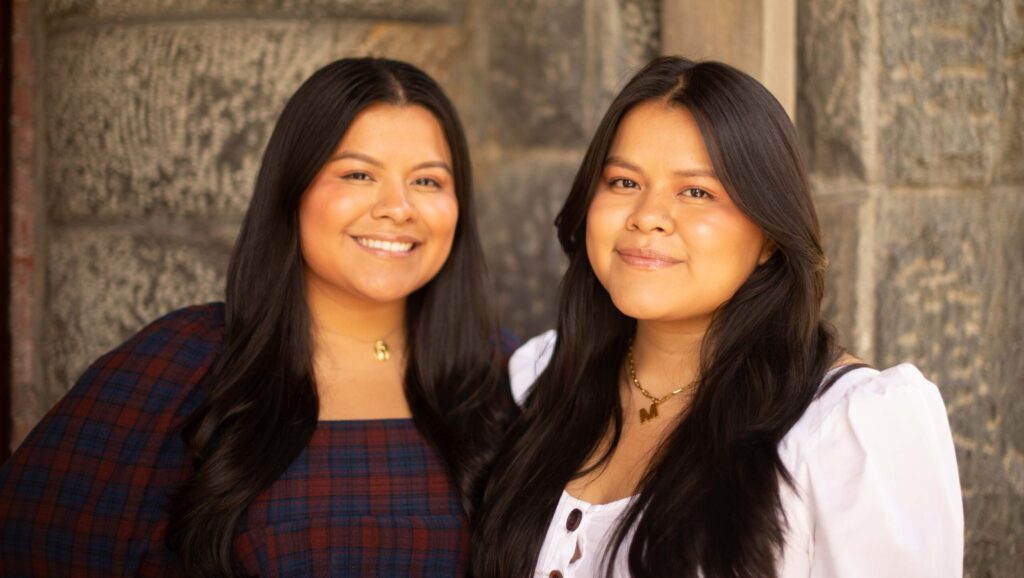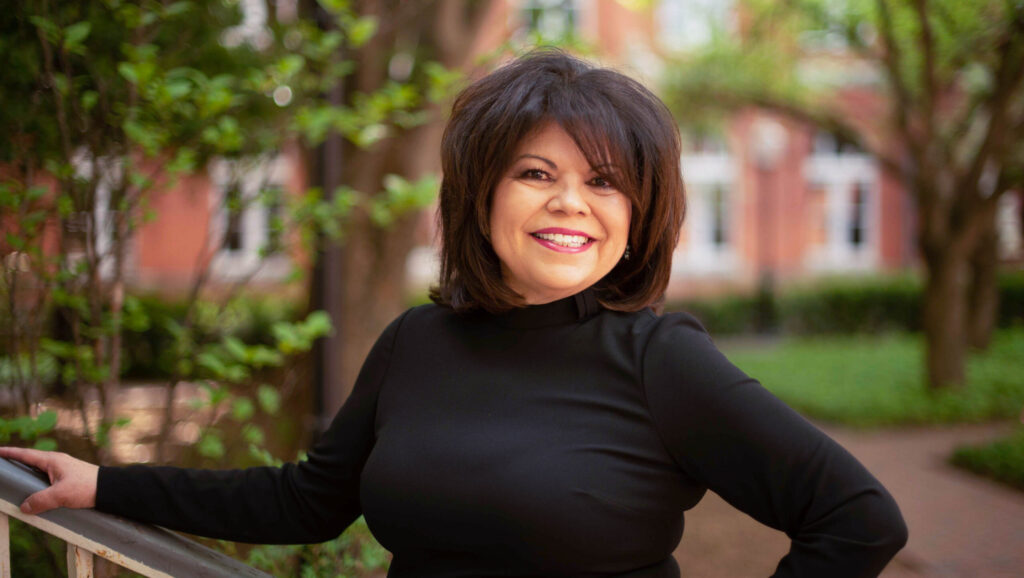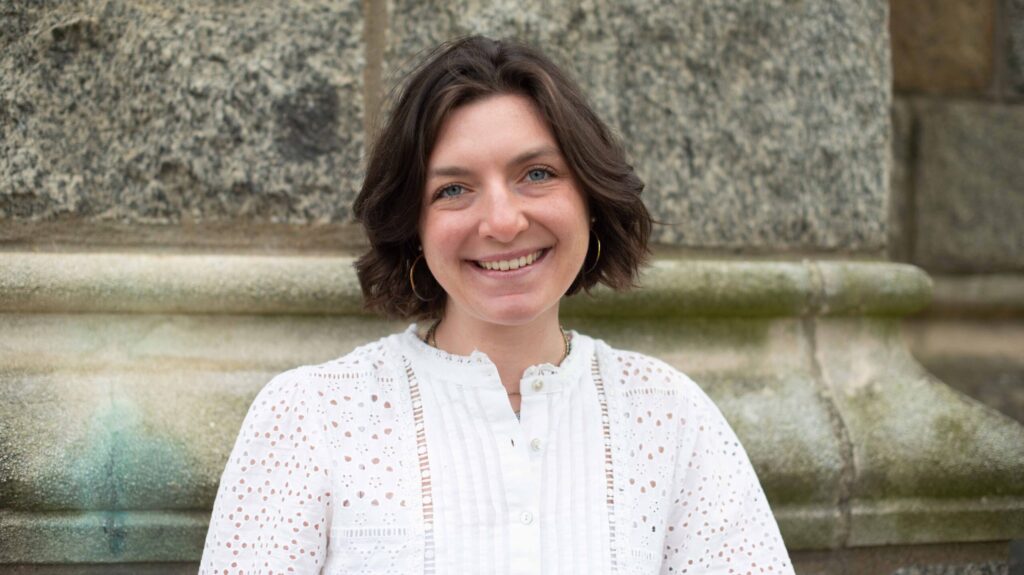How Elisia Bendy (C’23) Is Rewriting the Story of California’s Spanish Missions
Elisia Bendy (C’23) wants to tell the story of California’s Spanish missions, centering the narrative on the indigenous populations who had their ways of life upended through forced labor, coerced religious conversions and deadly foreign pathogens.
A Californian who grew up in the shadow of Mission San Gabriel Arcángel, Bendy had heard the story of the missions told in classrooms, museums and on tours. Regularly, that history elided the brutal reality of colonization for native populations. In her senior thesis, Bendy argues that the time is now to retell their story.
“My thesis oscillates between narrative and space,” explained Bendy, an American studies major. “How people have used the space, how they are using it now and the way that correlates with how the missions have been discussed over time.”
The Mission of the Mission
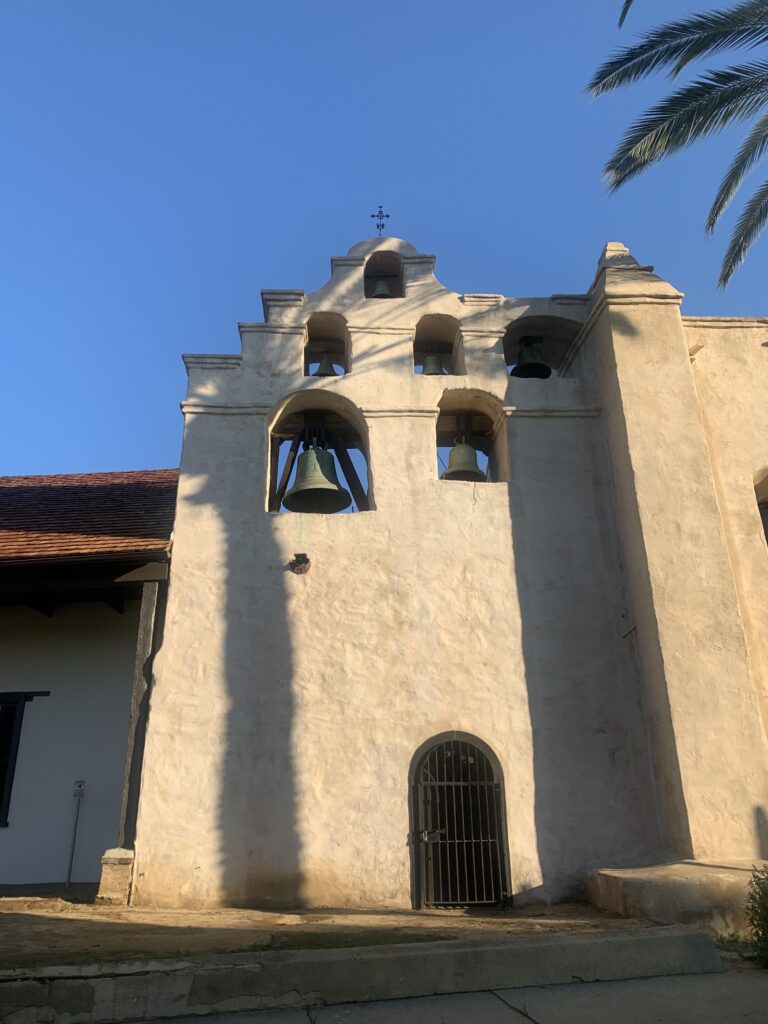
Mission San Gabriel Arcángel, taken by Elisia Bendy (C’23) while conducting research.
Established in 1771, Mission San Gabriel Arcángel was the fourth of 21 California mission sites established along the West Coast between 1769 and 1823. These sites were used to reinforce Spanish colonial power and convert indigenous populations.
In 1834, the governor of Alta California began seizing the missions from the church. Mission lands were auctioned off to wealthy families or left to rot. Neither the crown nor the state nor the church supported the maintenance and upkeep of the missions. As the years crept on, with the missions existing in various states of decay, the realities of their existence were obscured by a new romanticization of their past.
“Anglo-American settlers from the East Coast, initially disliked that California had physical remnants of Spanish – rather than English – colonialism,” explained Bendy. “With the development of more favorable attitudes towards the Spanish, they decided to crown themselves as new inheritors of this Spanish colonial history. Placing themselves as pioneers in this story and praising the actions of the missionaries served to further erode the public remembrance of how the missions actually functioned.”
New events were held at the missions, new signage was posted and physical structures that testified to the labor done at the mission were built over – all of which glossed over a more brutal reality, according to Bendy. Across the street from Mission San Gabriel, a theater was constructed, which gave a stage to revisionist performances about the mission’s history.
“The physical ways that Mission San Gabriel has changed over time has led to a revisionist, romanticized history that pushes indigenous experiences to the periphery,” said Bendy.
Rebuilding the Mission, Retelling the Story
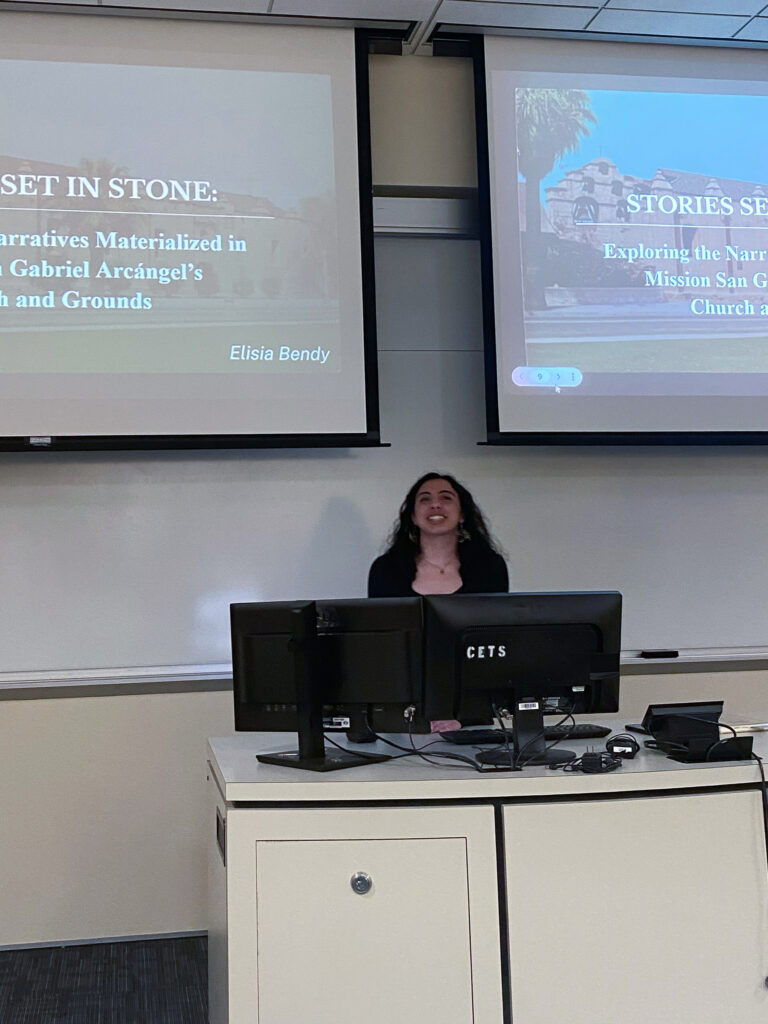
Elisia Bendy (C’23) presenting her thesis.
In 2020, Mission San Gabriel suffered significant damage from a fire. As Bendy observed, this was not only a chance to physically reconstruct the building, but revise how the story of Mission San Gabriel is told.
“Today, these sites function as historical sites, complete with visitor centers and tours,” said Bendy. “But how well do these sites tell their own history?”
To conduct research, Bendy cast her net far and wide, poring over old blueprints, maps, postcards, archival images and tourist materials produced by and for visitors today. She also interviewed some of the personnel currently running the mission.
Bendy connected a slew of disciplines into her study of Mission San Gabriel. From her courses in sociology and African American studies, she extracted concepts of gentrification and land change. From coursework in art history, Bendy pulled information on 19th-century landscape art and the architecture of churches. To explore the sense of place that these sites create, Bendy took a course on critical geographies in the School of Foreign Service. An upper-level history course on public history prepared her to analyze historical sites. All of these academic disciplines are synthesized in the spatial and memory-oriented approach of her thesis.
“I’m not only interested in how these spaces were formed and what happened there, but in how they have been memorialized and remembered,” said Bendy.
To Graduation and Beyond
Bendy’s thesis provided the perfect capstone to her undergraduate career, weaving together her own personal history, academic interests and passions. After graduation, Bendy is excited to continue investigating and documenting histories of marginalized people in the American West.
This year, Bendy has interned for the curatorial department of the Smithsonian Institution, working to improve documentation for the organization’s archives on Latino history. After graduating, Bendy will continue her internship through the summer, working on the Smithsonian’s extensive collection of Chicano newspapers.
Completing her thesis has been the perfect cap to four years on the Hilltop. Outside of the classroom, Bendy has been involved in MEChA de Georgetown, a student organization that promotes Chicano unity and empowerment. As a junior, Bendy served as the organization’s national conference representative, coordinating the group’s visit to the University of Pennsylvania. She has also been an active member of Groove Theory, the student-run hip-hop dance troupe, for all four years.
In her time at Georgetown, Bendy has worked as a coordinator for the DC Schools Project, a program of the Center for Social Justice, Research, Teaching & Service, that provides tutoring, mentoring and advocacy for students in Washington, DC. She has also worked in the Georgetown University Archives and assisted Yuki Kato, an assistant professor in the Department of Sociology, in her research on Black land and farm ownership in the District of Columbia.
For Bendy, it’s been the journey of a lifetime, and she’s only just beginning.
“Georgetown was my dream school, my reach school – the furthest one away that I applied to. I was either going to go to college twenty minutes away from home or across the country,” said Bendy. “I’m so happy that I came to Georgetown. I’ve grown as an academic and as a person. I feel empowered and equipped for the next stage of my life.”
